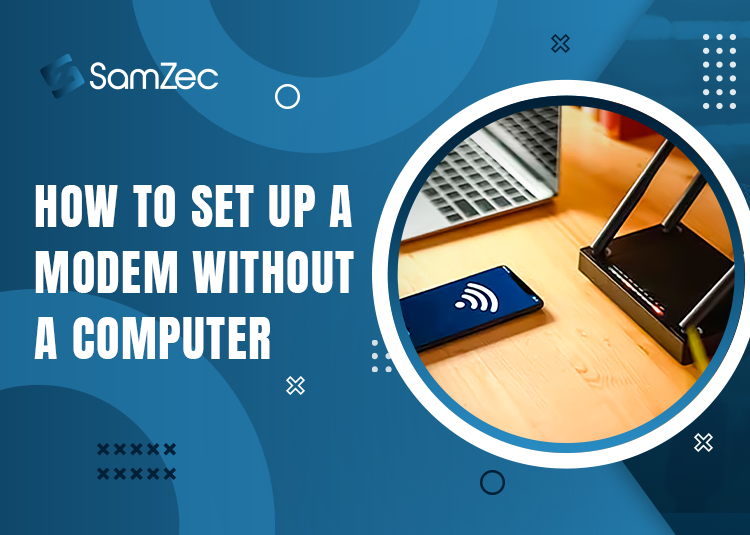Modems first became popular in the early 1990s when they connected PC users to the Internet. Almost everyone is now used, regardless of their socioeconomic status or location. A modem connects your computer to the telephone line and converts voice signals into digital data packets that can be sent over the Internet.
If your business uses modems, you know that you need modems, and you need them to work. While modems are not quite as prevalent as a decade ago, they still have their place in business communications. One of the most important things you can do is to set up the modem you already have. Most modems are just plug-and-play. Just plug them in and online. However, some are a little more difficult to set up. The article below will show you how to set up a modem without a computer.
Find the Right Modem:
There’s no doubt that modems have come a long way in the last few years, but which modem is right for you? Here are six tips to help find the best modem for your needs.
- Consider what type of Internet service you need. A modem with a fast upload speed will work best with fiber optic services, while one that has a better download speed is necessary for satellite or cable providers.
- Get a modem that supports your network’s protocol. Some modems only support specific networks, such as DSL, cable, and satellite; make sure the one you choose supports your network’s protocol before purchasing.
- Consider what features you need. Do you need a basic modem to access the Internet and send or receive an email, or do you want more features like voice call capability?
- Purchase a modem with a Wi-Fi antenna to increase wireless connectivity at home.
- Check the coverage areas of your network service provider before purchasing a modem.
- Consider using an Internet-based router to connect multiple computers wirelessly and share one Internet connection. Just make sure you get one with dual-band wireless technology, which will work with both.
Configuring the Modem
Modem configuration is an essential task for anyone using a broadband connection. The modem is the device that connects your computer to the broadband service provider and allows you to access the Internet. There are many settings you can adjust to optimize your modem experience, from hardware compatibility to connection quality. This guide will outline the most common settings and help you get started configuring your modem.
How to connect a modem to your internet service provider
During the early days of the Internet, modems were one of the most critical devices on the network. The modem took information from a server and turned it into a signal that could be transmitted over the telephone network. Modems were the critical link between your computer and the Internet. Modern modems are essentially just a cable connecting your computer to an Ethernet port on your router. But you don’t need to purchase a new modem if you want to improve your internet connection. You can just reset your existing modem.
Conclusion
We hope you enjoyed our blog about setting up a modem without a computer. We know that you can get a modem connected to the Internet and ready to use with this knowledge.
FAQs
What does a modem do?
A modem turns your computer into a telephone. It is a device that allows you to use your computer to communicate with another computer over telephone lines. The modem has become as common as the computer itself and is essential to computer communication. A modem is used in most homes and offices.
What is the difference between a modem and a router?
The terms Modem and Router are used interchangeably to mean the device that converts a digital signal to an analog one and vice versa. While Modems convert digital signals to analog, they cannot route data packets from one network to another. It’s the primary job of a Router. The important thing to note here is that both the devices are designed to work together to allow data transfer from PC to PC, PC to Router, and Router to PC.
What are the different types of modems?
There are two main types of modems. The most common is a dial-up modem, which you connect to a telephone line. You’re probably using a dial-up modem if you’re connecting to the Internet at a cafe or someone else’s house. It’s slower than other modems, but it’s still the most common type you’ll use. The other type of modem is a cable modem. You’ll need a cable modem if you use a cable Internet connection. A cable modem can deliver a much faster Internet connection than a dial-up modem.




















